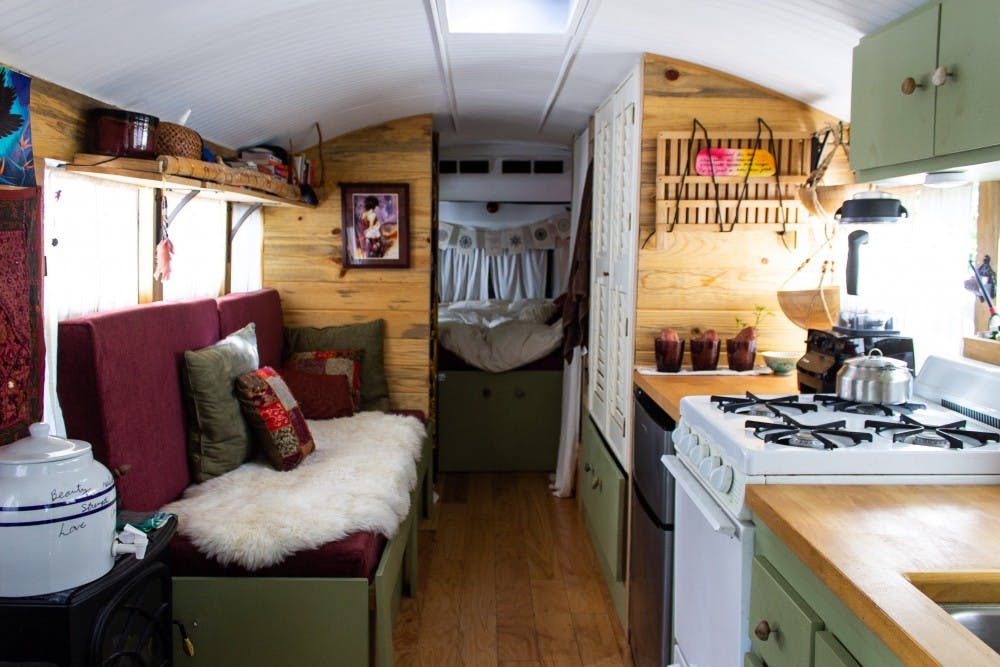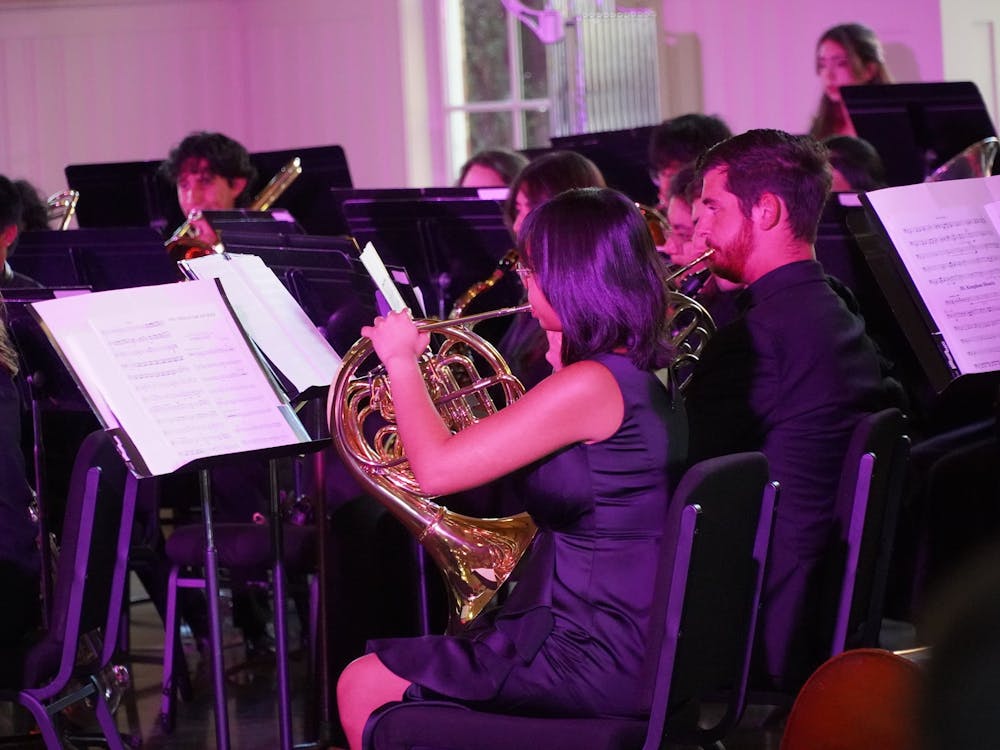After a few years of living in the dorms, most UP students are excited to move into off-campus houses with their friends. But junior Ruby Beauchamp had something different in mind. About a mile and a half from campus, Beauchamp lives in a pastel green school bus.
This is no ordinary school bus. When you walk through the entrance and push aside a beaded curtain made of peach pits hanging above the doorway, you won’t find leather seats or lunch boxes, but a fully-equipped kitchen, hardwood floors, a window seat, full size bed, bathroom and shower.
Beauchamp lives in what is popularly termed a tiny house. While the typical American house is around 2,600 square feet, tiny houses average between 100 to 400 square feet. The goal of the tiny house movement is simple: make your life as small as possible.
While most people couldn’t imagine living in such close quarters, Beauchamp is used to living simply. In northern California, the organizational communication and Spanish major grew up in a house that her family built out of straw bales with adobe furniture sculpted into the walls of their living room. Her mom, a nutritional consultant and mind-body specialist, and her dad, a financial consultant, emphasized community and simplicity.
“Growing up, my family had a very communal household,” Beauchamp said. “We would always have guests and housemates and a couple of people would stay with us in our RV for a short period of time. Just the idea of being able to live very simply has always been a part of my life. I grew up with minimalism and simplicity all around me.”
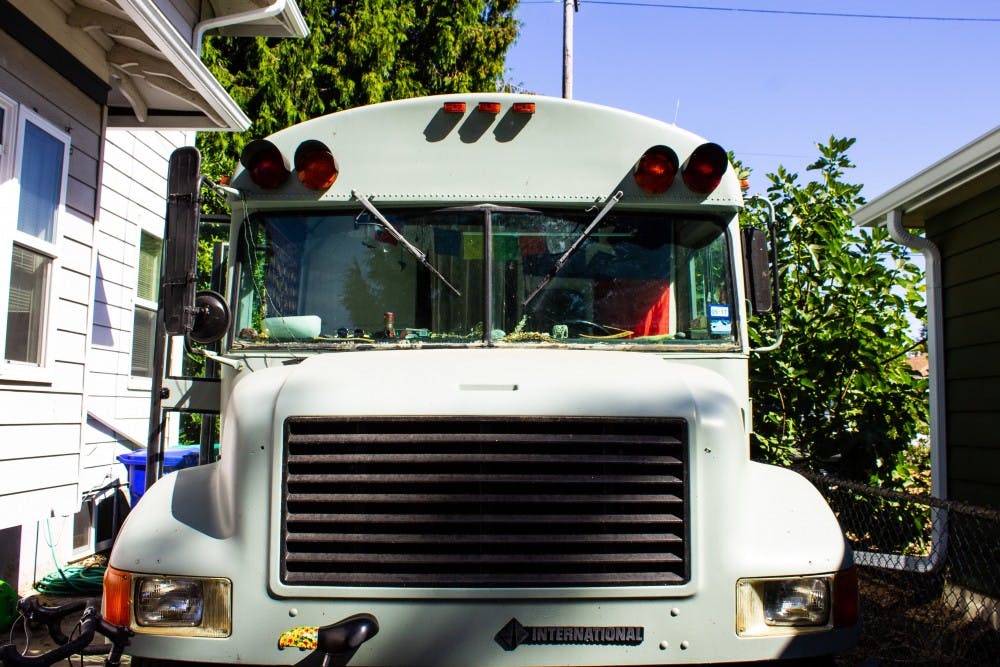
Ruby Beauchamp lives in an old school bus that was converted into a charming tiny home by one of her friends. The outside of the bus is painted a light pastel green. Originally converted in California, Ruby and her friend drove the bus up to Oregon before the beginning of the school year.
Most tiny houses are independent structures, while some, like Beauchamp’s, are on wheels. Beauchamp rents out her bus from her childhood friend whose family built the tiny house a few years ago. Beauchamp also pays rent to the homeowner in Portland, who she met through a Facebook group, to park in their driveway.
During the summer, Beauchamp and her friend set out on a 3-day road trip in the bus driving along the West Coast from northern California to Portland and stopping to camp out in the Willamette National Forest along the way. Before taking off, Beauchamp had to secure the bus by locking up loose items. Locks and latches are on many of the doors and cabinets to keep everything in place while the bus is moving.
While she doesn’t own the bus, Beauchamp makes it her own. Throughout the tiny house she has hand-made drawings hanging on the walls and keepsakes from her travels to Ecuador and her semester abroad in Granada, Spain last spring. She also gave her tiny house a name — “The Blunder Bus.”
“If cars or like houses could be a person incarnate, that one is very much Ruby,” junior Alice Goldin, Beauchamp’s best friend and freshman year roommate, said. “I don’t know how much it would change over time, but I feel like at this time in her life that’s the perfect (home) for her.”
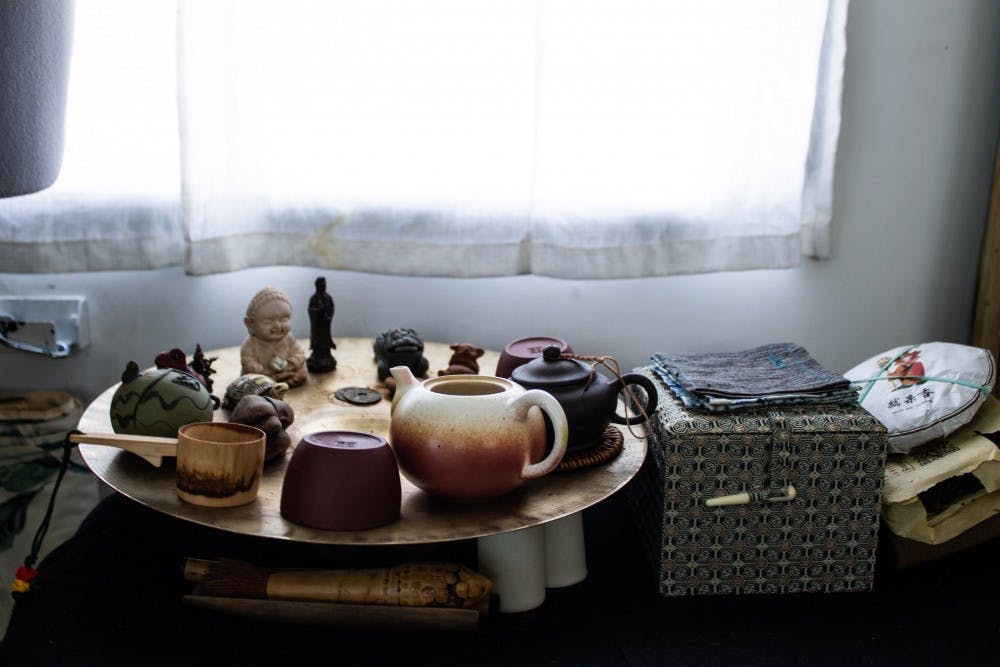
When describing her daily routine, Ruby said she makes a cup of tea for herself each morning.
Beauchamp said that living in a tiny home is less like camping and more like living in a well-equipped tree house with water, heat and electricity. But tiny home living still comes with its challenges.
For Beauchamp, the hardest part of living in a tiny home is performing tasks manually and managing her waste, which includes trash and water waste from the sink and shower. But she also views this as an advantage because it allows her to be more aware of how much she throws away.
“We’re incredibly disconnected from the amount of waste that we have, just in the way that our houses are set up and our cities are set up,” Beauchamp said.
Everyday she has to connect and disconnect the hose that provides her with running water, empty her waste water from the sink and shower and manually light her stove.
By living in a small space, Beauchamp is able to maintain a more minimalist lifestyle. The minimalist movement, popular among millennials and Generation Z, has been trending across the United States. Young adults are decluttering their lives, buying less, shopping second-hand and making more sustainable purchases.
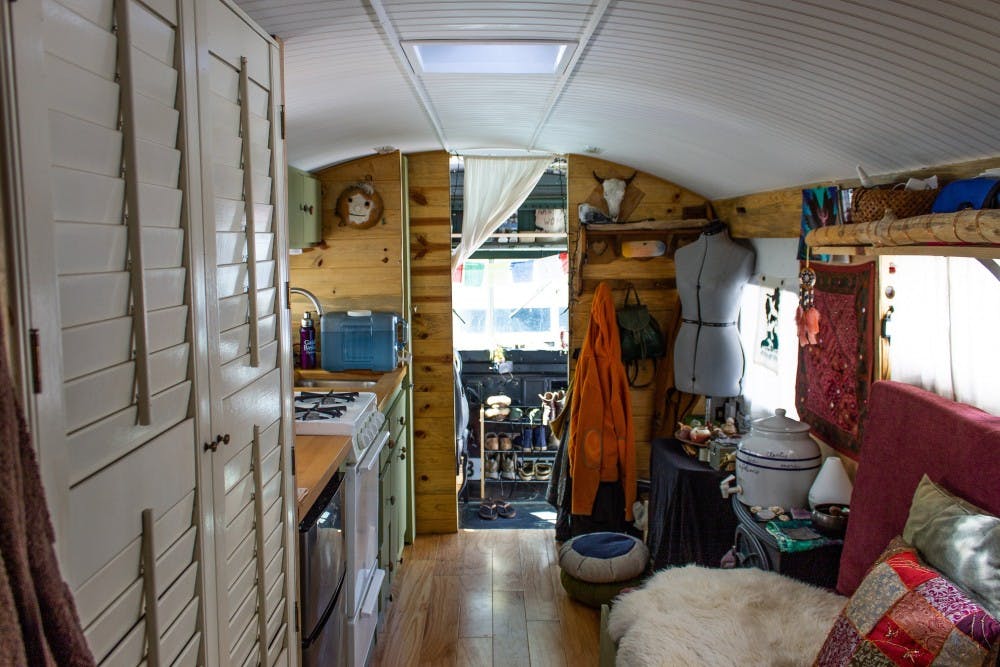
Ruby decorated her home with items from her travels as well as practical items that represent her passions. Ruby is the President of the UP club Basic Stitches, her passion for sewing and creating shown through her mannequin in the corner.
Beauchamp described minimalism as an ongoing process. Every time she wants to buy something new, she donates or sells something else — a process she calls “purging” — to avoid accumulating too many things in her life. Everything she owns is on her bus, except for a box of keepsakes that she stores at her parents’ house.
“Certain things have stayed in my life for a long time and other things come and go,” Beauchamp said. “As I’ve grown up, I’ve brought things into my life to keep and let go of other things, which has also been a nice reflection. If you purge periodically, it can be a reflective process of looking at things in your life that once served you but no longer serve you and letting that go.”
Because Beauchamp’s space is limited, it’s easy for her to track her ecological footprint. By managing her own waste, she can keep track of how much water and energy she uses, how much food she eats and how much she throws away.
Environmental studies professor Heather Carpenter, one of Beauchamp’s professors, said that the advantage to living in a tiny house is that it creates “self-imposed limitation.” According to an article from the LA Times, the average American household has nearly 300,000 items, which could be anything from paper clips to table lamps. When someone lives in a small space, the amount of stuff they can own has to be reduced.
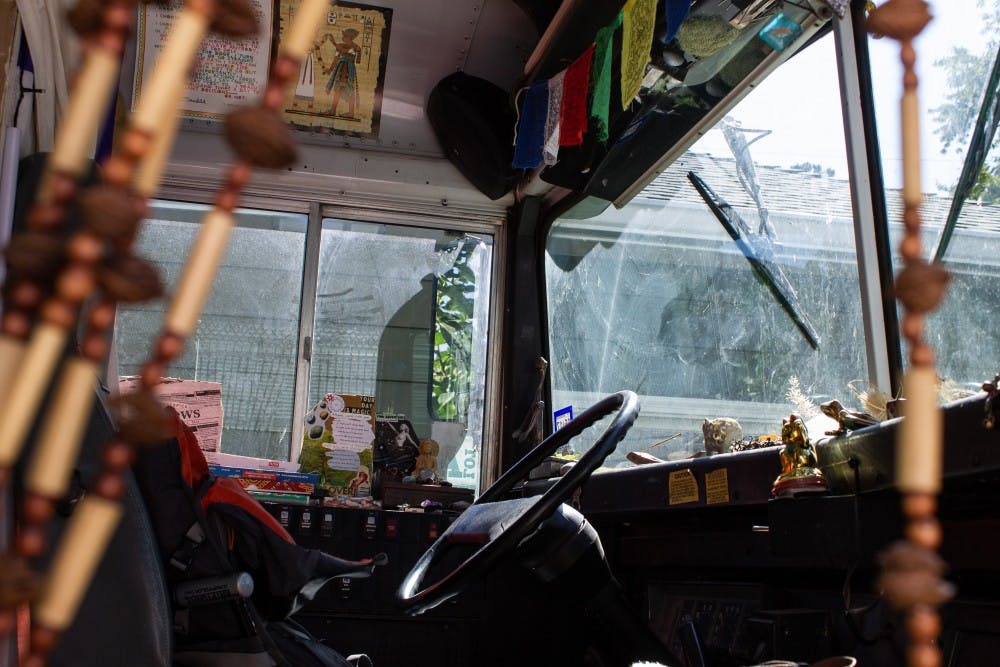
In order to enter the bus one has to pass through a beaded curtain made of peach pits.
Carpenter said that tiny homes are “a great alternative movement” as long as they don’t become mainstream. If everyone lived in a tiny house, it would create urban sprawl and take up land that could be used for agriculture.
“When everybody’s living in these big houses, tiny houses are a great idea because you can slip them in the neighborhoods,” Carpenter said. “You have such a small footprint for you, but if everybody in Portland lived in tiny houses, we’d have this sprawl of a gazillion tiny houses.”
By parking in a neighbor’s driveway, like Beauchamp, tiny houses can discreetly fit into suburbs without taking away the charm of the neighborhood. Most people don’t want to give up their suburban lifestyle, and tiny homes provide a “culturally-sensitive way to increase the density,” Carpenter said.
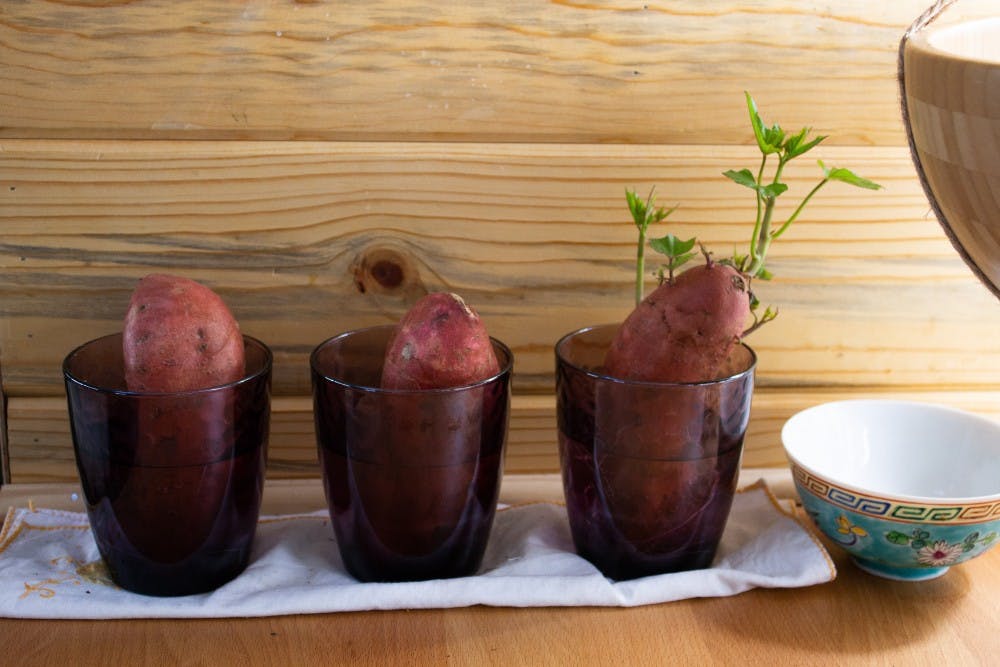
Ruby brings plant life into her tiny home by growing sweet potatoes in her kitchen.
The idea of living in a tiny home is radical to some people. Carpenter said that many are turned off to the idea of living in a small space because American culture puts so much emphasis on material items, and there’s a sense of entitlement that comes with having certain things like a 30 minute shower or a new pair of shoes.
“My students are often surprised at how much their personal choices actually matter,” Carpenter said.
In addition to environmental advantages, Beauchamp described living in a tiny home as a mindful activity that draws her awareness to things that she might otherwise take for granted. Although she said that she doesn’t need to live in a tiny house to be mindful.
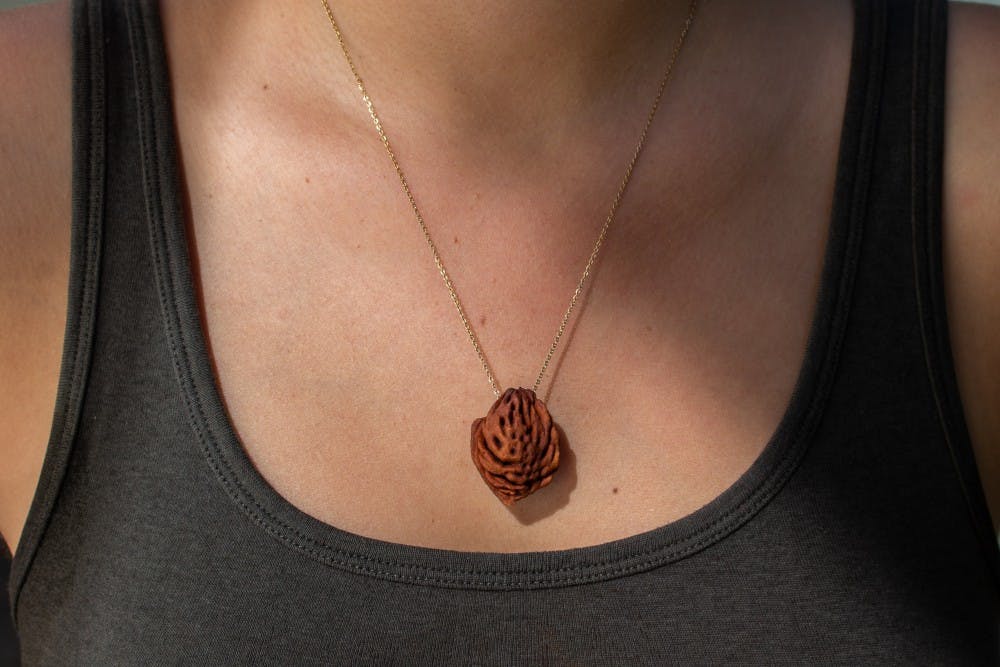
Ruby wears a simple peach pit necklace that matches her beaded curtain. The necklace was made by her sister, who loves peach pits. She wears it as a reminder of family and the passion for social justice she shares with her sister.
There’s a stigma around what it means to be mindful, Beauchamp said. People that live in tiny houses are often stereotyped as hippies that don’t want to pay taxes, but the tiny house movement is much more than that.
“Right here, right now I’m doing my best to live a mindful, meaningful life, which is to say come to grips with my privilege and own my place in the world,” Beauchamp said. “I choose to do this by caring for our home, Earth, which knowing what we know about the universe, is a tiny home.”
Beauchamp finds living in a tiny house to be purposeful because she can focus on herself as an individual and see her impact on the world more up close. She said that living by herself is “transformative” and allows her to get to know her bigger self and her soul.
As a part of her daily routine, Beauchamp wakes up, makes herself a cup of tea and meditates before hopping on her bike and riding to campus. She plans to live in her tiny house for her last two years at UP.
“Everyday can feel like an adventure,” Beauchamp said. “It’s super important, especially at this time, to cultivate a sense of wonder and curiosity about what kind of adventure life can be.”
Brigid Lowney is the living editor for The Beacon. She can be reached at lowney19@up.edu.



